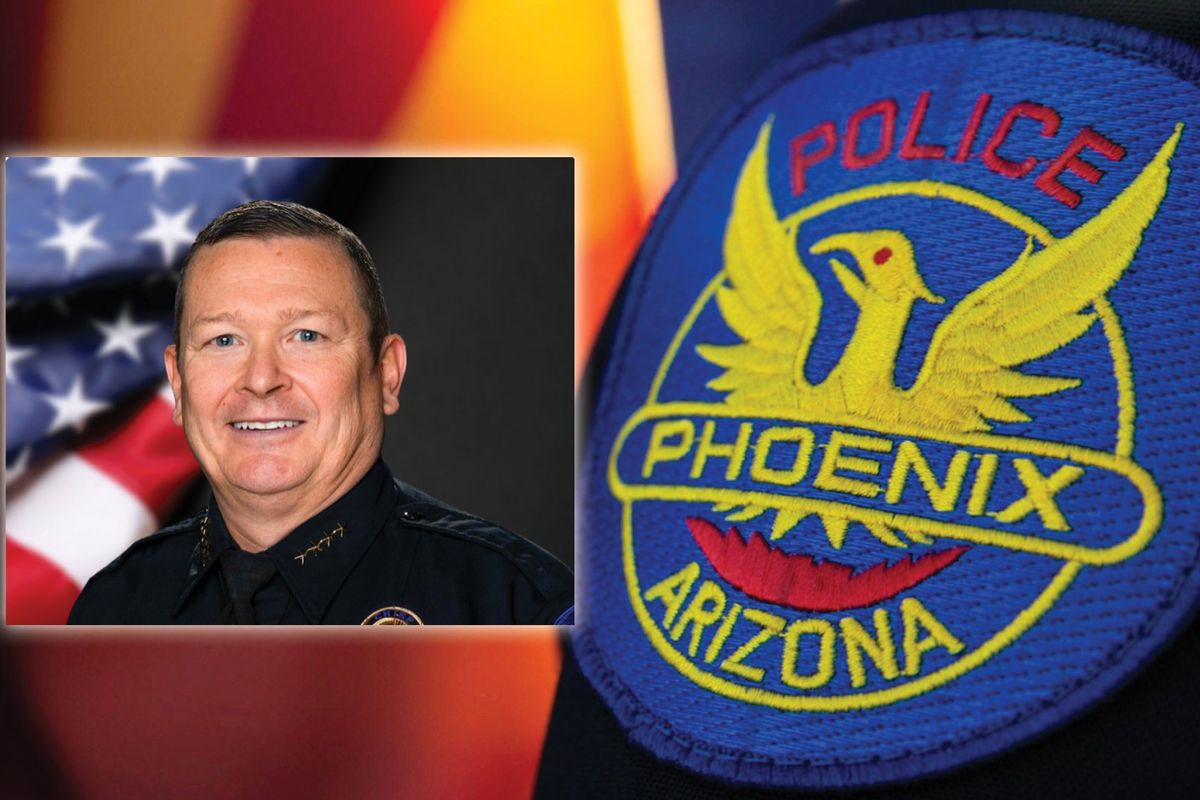
Michael G. Sullivan, who shepherded two large urban police departments through U.S. Department of Justice civil rights investigations, has been named chief of U.S. Capitol Police to succeed the recently retired J. Thomas Manger.
Barely two days after naming USCP Assistant Chief Sean P. Gallagher as acting chief, the U.S. Capitol Police Board announced the hiring of Sullivan, who served as interim chief of the Phoenix Police Department from September 2022 until mid-April 2025. Sullivan has more than 30 years of law enforcement experience in Phoenix, Baltimore, and Louisville.
‘Chief Sullivan has succumbed to the pressure of bureaucrats and biased media.’
The announcement from the Capitol Police Board came late on June 4 amid outcry over the elevation of Gallagher as acting chief. The USCP Labor Committee on June 3 registered fierce opposition to Gallagher, who was ensnared in a 2010 overtime fraud investigation and later panned for alleged inaction from the Command Center as massive crowds descended on the Capitol on Jan. 6, 2021.
“With over 30 years of law enforcement experience across three major U.S. cities, Michael Sullivan has focused on increasing transparency, improving departmental efficiency, and fostering strong relationships between officers, elected officials, and the community,” the Capitol Police Board said in a statement.
Sullivan will be sworn in June 30 as the eighth Capitol Police chief since the turn of the century. The department was founded in 1828. It is not clear whether Gallagher will remain acting chief in the nearly four weeks until Sullivan’s arrival.
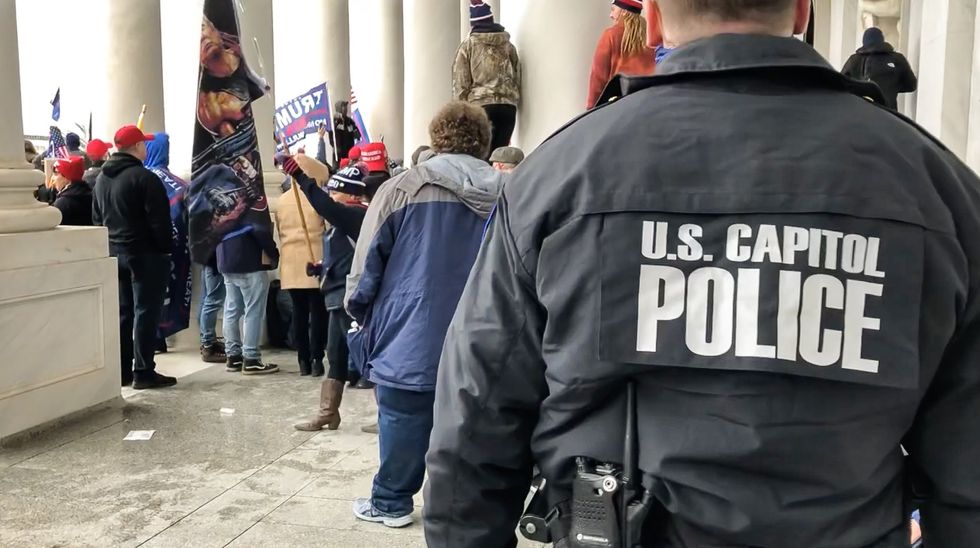
Incoming U.S. Capitol Police Chief Michael Sullivan inherits a department still rebuilding from the chaos of Jan. 6, 2021.Photo by Bobby Powell
Sullivan resigned as interim chief of the Phoenix Police Department after withdrawing his name from consideration for the permanent chief position on April 8. He said at the time that it was best for the department and the city that the search for a chief be restarted without him.
During his nearly three years at the helm in Phoenix, Sullivan’s role was to guide the department through the DOJ pattern and practice investigation. The city submitted its “Road to Reform” plan to the DOJ in January 2024. During the latter part of his tenure in Baltimore, Sullivan was “responsible for implementing the broad set of reforms mandated by the consent decree entered into by the City of Baltimore and the DOJ in 2017,” according to the Road to Reform document.
“When I accepted this role, the department was under a Department of Justice (DOJ) Pattern and Practice investigation and facing significant challenges,” Sullivan said at the time. “Throughout my tenure, I’ve worked diligently to navigate that process while focusing on crime reduction, strengthening community trust, and building a culture of continuous improvement.”
Sullivan came to Phoenix in September 2022 to a department under deep scrutiny by the DOJ. A federal civil rights probe that ended in June 2024 said the Phoenix Police Department often used excessive and deadly force, discriminated against people of color, and violated the civil rights of “people engaged in protected speech and expression.”
‘Our officers and Phoenix residents deserve better.’
“In the years leading up to our investigation, PhxPD officers shot and killed people at one of the highest rates in the country,” said the DOJ report released June 13, 2024. “Some city officials blamed a ‘more violent population’ for the number of shootings, rather than police conduct. But we found a significant number of the shootings did not meet constitutional standards.”
The DOJ report cited “pervasive failings” in policies, training, supervision, and accountability systems “that have disguised and perpetuated these violations for years.”
“PhxPD relies on dangerous tactics that lead to force that is unnecessary and unreasonable,” the DOJ report said. “PhxPD has taught officers a misguided notion of de-escalation. Rather than teaching that de-escalation strategies are designed to eliminate or reduce the need to use force, PhxPD has misappropriated the concept and teaches officers that all force — even deadly force — is de-escalation.”
The Phoenix Police Department employs nearly 2,600 sworn officers.
Sullivan told Phoenix news media that opposition to his reforms and lack of support from the police union were not factors in his decision to resign.
“Sullivan also played a critical role in guiding PPD through a Department of Justice (DOJ) ‘pattern-and-practice’ investigation, ensuring that necessary reforms were made in a meaningful and sustainable manner,” the Capitol Police Board statement said. “Additionally, he overhauled PPD’s use-of-force policies, ensuring officers receive updated training on best practices, and restructured the Organizational Integrity Bureau to reinforce accountability within the department.”
RELATED: Capitol Police union raps appointment of controversial acting chief with checkered history
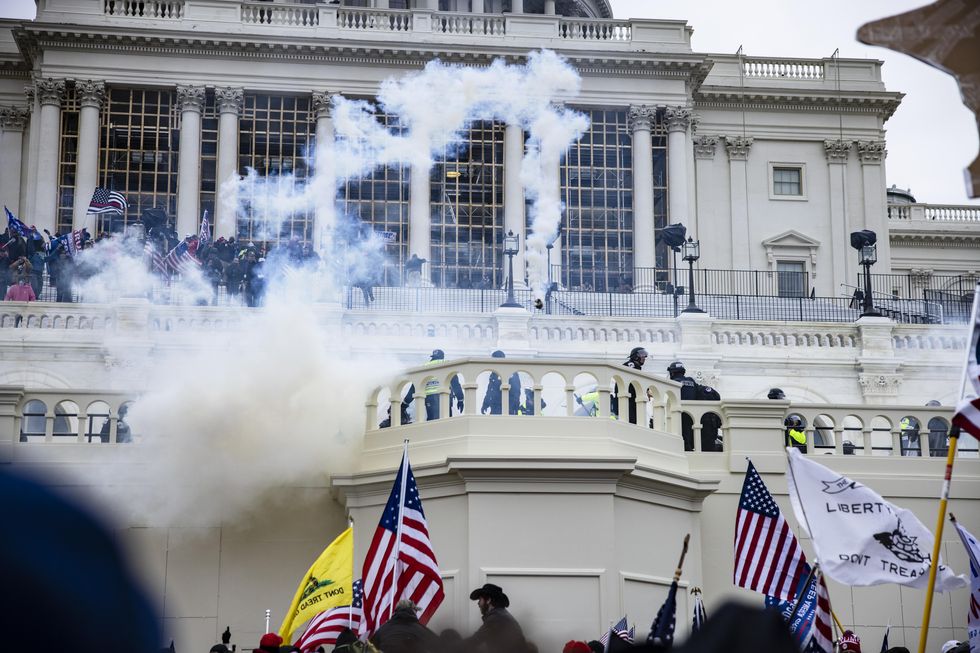
The U.S. Capitol Police union accuses department leadership of failing officers during the protests and rioting on Jan. 6, 2021.
Photo by Samuel Corum/Getty Images
In February 2025, a Phoenix Law Enforcement Association survey found that union members felt Sullivan was leading the police department in the wrong direction. Darrell Kriplean, president of the officers’ union, rapped Sullivan for an alleged lack of support.
“Rather than defending our officers when they acted properly and within department policy, Chief Sullivan has succumbed to the pressure of bureaucrats and biased media,” Kriplean said, according to the Arizona Republic. “Our officers and Phoenix residents deserve better.”
Sullivan came to Phoenix after three years as deputy commissioner with the Baltimore Police Department, which underwent a federal civil rights probe that ended in 2016. Sullivan led the Patrol Operations Division, Criminal Investigations Division, and the Data Driven Strategies Division. The Baltimore Police Department has more than 2,500 sworn officers and professional staff.
The DOJ said that Baltimore Police Department “engages in a pattern or practice of conduct that violates the First and Fourth Amendments of the Constitution as well as federal anti-discrimination laws.”
“Our investigation found that Baltimore is a city where the bonds of trust have been broken, and that the Baltimore Police Department engaged in a pattern or practice of unlawful and unconstitutional conduct, ranging from the use of excessive force to unjustified stops, seizures, and arrests,” said then-U.S. Attorney General Loretta Lynch.
Prior to the Baltimore assignment, Sullivan spent 24 years with the Louisville Police Department, rising to the rank of deputy chief in 2015.
Sullivan’s experience on paper seems a solid match for the U.S. Capitol Police, a department rebuilding after the civil unrest on Jan. 6 with a long-standing problem of internal corruption and alleged favoritism in officer discipline cases.
“I’m pleased that the Capitol Police Board went outside of the current USCP leadership to bring in someone who can hopefully reform the Capitol Police command structure,” said U.S. Rep. Barry Loudermilk (R-Ga.), whose Committee on House Administration Subcommittee on Oversight conducted extensive investigation of the department during the 118th Congress.
“I encourage Chief Sullivan to very quickly look at the department’s OPR [Office of Professional Responsibility] files and then clean up the systemic problems with equitable disciplinary actions,” Loudermilk told Blaze News.
Assistant Chief Gallagher was recommended for termination in the wake of a 2010 overtime fraud scandal, but then-Chief Kim Dine intervened in the case and Gallagher received only a 10-day unpaid suspension.
The Capitol Police department is retooling after an exodus in the wake of Jan. 6 protests and rioting that injured more than 100 officers. During Manger’s nearly four-year tenure, Congress provided massive budget increases to refill the ranks and help the department adjust to an era of rapidly increasing threats against lawmakers.
Fallout from Jan. 6 includes the killing of Air Force veteran Ashli Babbitt by Lt. Michael Leroy Byrd that led to an ongoing $30 million wrongful death lawsuit by Judicial Watch Inc. on behalf of Aaron Babbitt and his late wife’s estate.
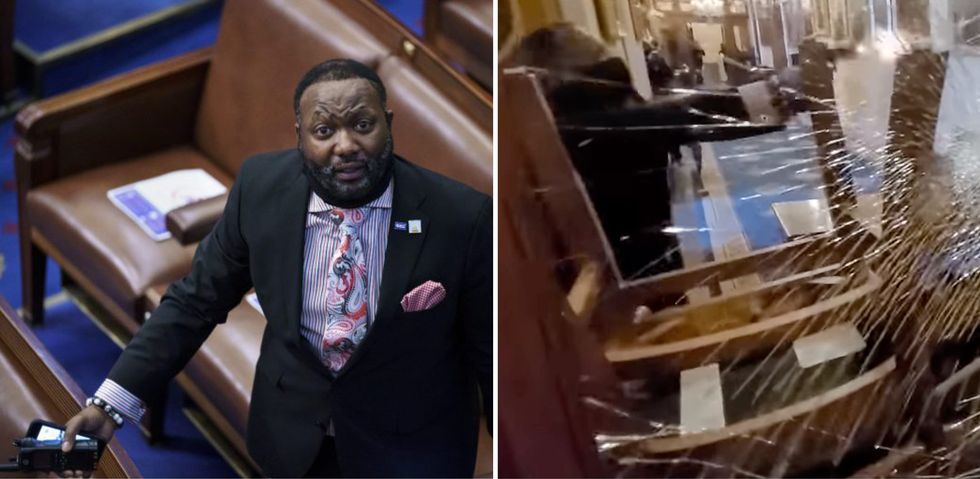
Lt. Michael L. Byrd, who killed Ashli Babbitt at the U.S. Capitol on Jan. 6, 2021, has ‘significant’ discipline history including gun incidents, U.S. Rep. Barry Loudermilk (R-Ga.) disclosed in November 2024.
Photos by Judicial Watch, John Sullivan
In the months after the fatal shooting outside the Speaker’s Lobby, Capitol Police kept Byrd’s name from the public, spent more than $35,000 to house him in an admiral’s suite at Maryland’s Joint Base Andrews, paid him $37,000 in retention funds, and paid for $21,000 in security upgrades at his Maryland home.
Loudermilk told Manger in a November 2024 letter that he was troubled that the department promoted Byrd to captain despite a nearly quarter-century discipline record that included reckless use and handling of a firearm, firing into a fleeing van near his home while a neighbor was in the line of fire, and abandoning his post in the Speaker’s Office for a cloakroom card game.
Loudermilk told Manger to supply a list of information about the handling of Byrd’s case, but the just-retired chief ignored the letter, sources told Blaze News.
The department is also under the cloud of false testimony given by Officer Harry Dunn and Special Agent David Lazarus against the Oath Keepers in the 2022 seditious conspiracy trial. An investigation by Blaze News found that the story told by Dunn and Lazarus about an alleged confrontation with a group of Oath Keepers could not have happened as described under oath because Lazarus was not even in the Capitol at the time.
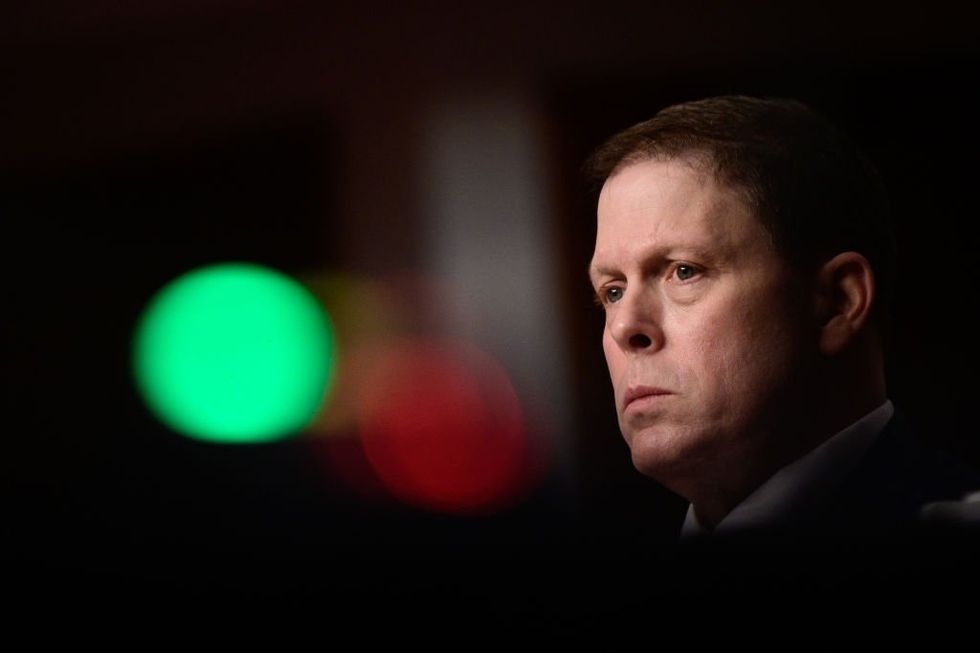
Former U.S. Capitol Police Chief Steven A. Sund testified before Congress about political resistance to his requests for National Guard help on Jan. 6, 2021.Photo by Erin Scott/The New York Times/Bloomberg via Getty Images
Congress is also faced with questions about oversight of USCP by the three-person Capitol Police Board. Loudermilk’s committee found that politics played a major role in the denial of National Guard troops to help quell riots at the Capitol on Jan. 6.
Former USCP Chief Steven A. Sund has testified that he struggled to get support for Guard presence at the Capitol because the Capitol Police Board was worried about blowback from then-Speaker Nancy Pelosi (D-Calif.).
Under regulations in force at the time, Sund could not go directly to the Pentagon to secure help from a D.C. National Guard quick-reaction force. His requests for help were denied for days leading up to Jan. 6 and for 71 minutes after crowds rolled over the outer police barricades on Jan. 6.
Sund said the chief needs authority to quickly get Guard assistance to put down riots at or near the Capitol. For the first time in 119 years, the D.C. National Guard was not allowed to respond to Washington, D.C., riots because Democrats in Congress and politicized generals at the Pentagon reportedly stymied Sund’s calls for aid.
Sund activated the Capital Region mutual aid system, which rushed 1,700 officers from surrounding jurisdictions to retake the Capitol. By the time the first D.C. Guardsmen set foot on Capitol grounds on Jan. 6, officers from the New Jersey State Police had made it to the Capitol to lend aid.
Like Blaze News? Bypass the censors, sign up for our newsletters, and get stories like this direct to your inbox. Sign up here!
Leave a Reply